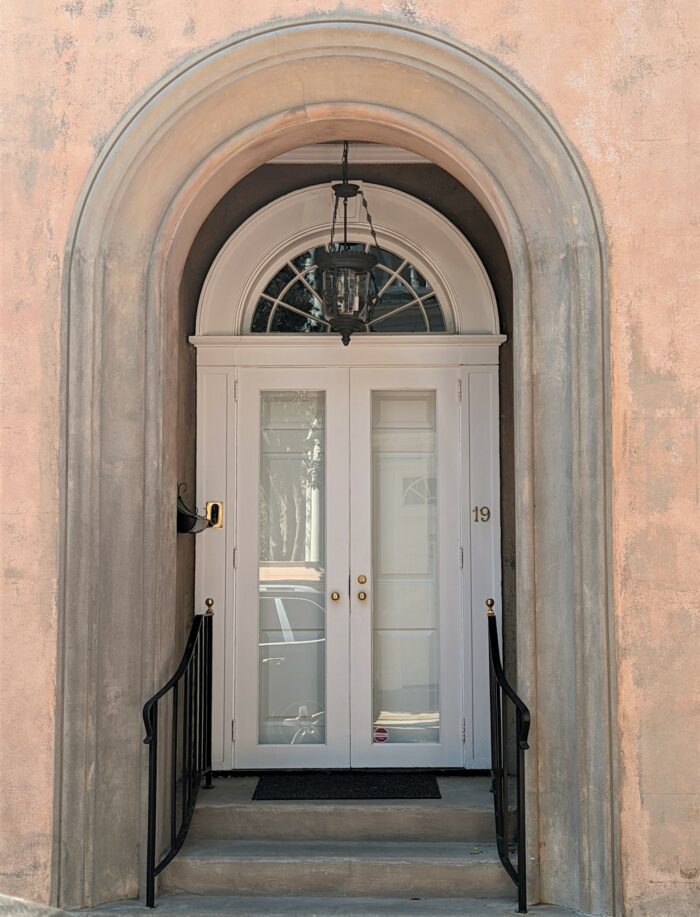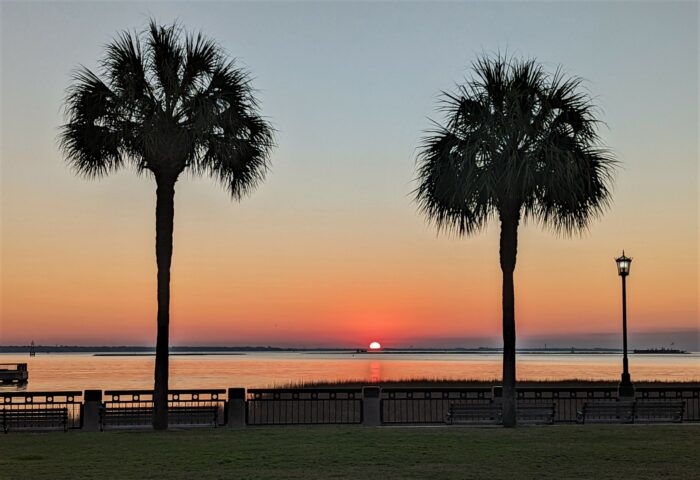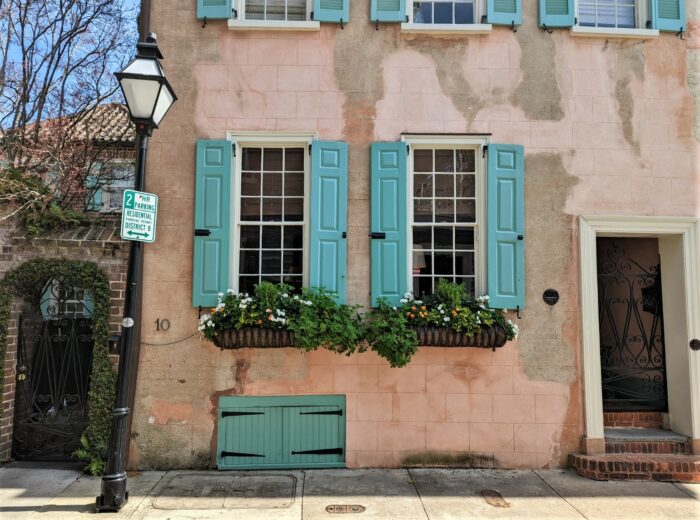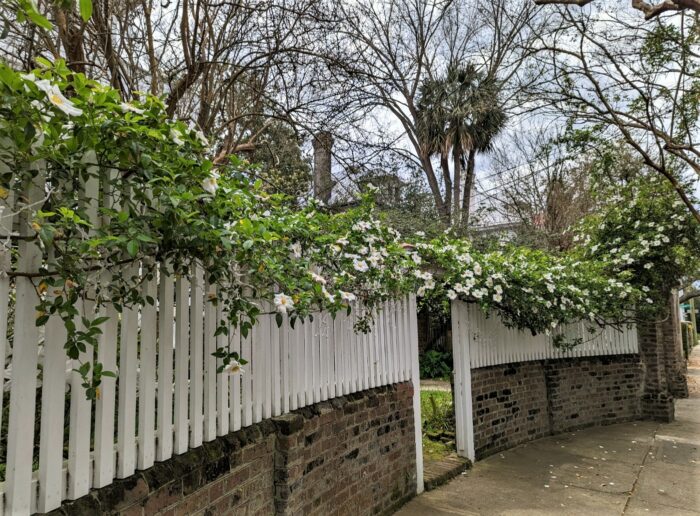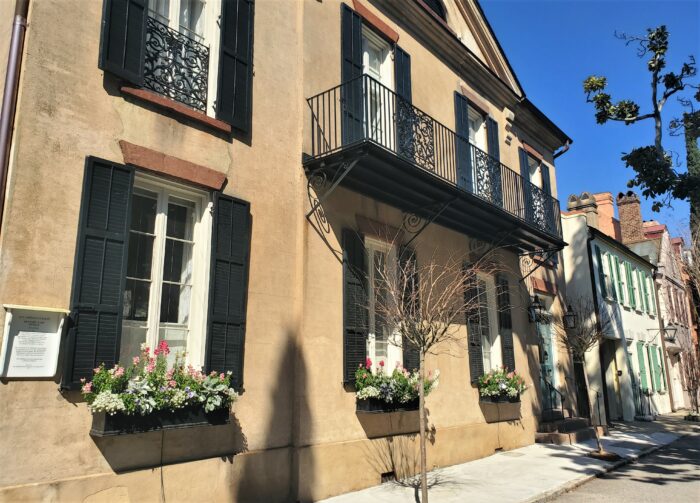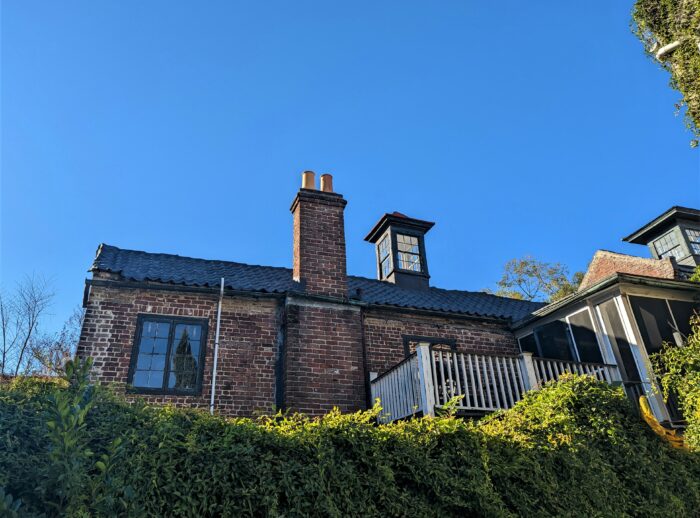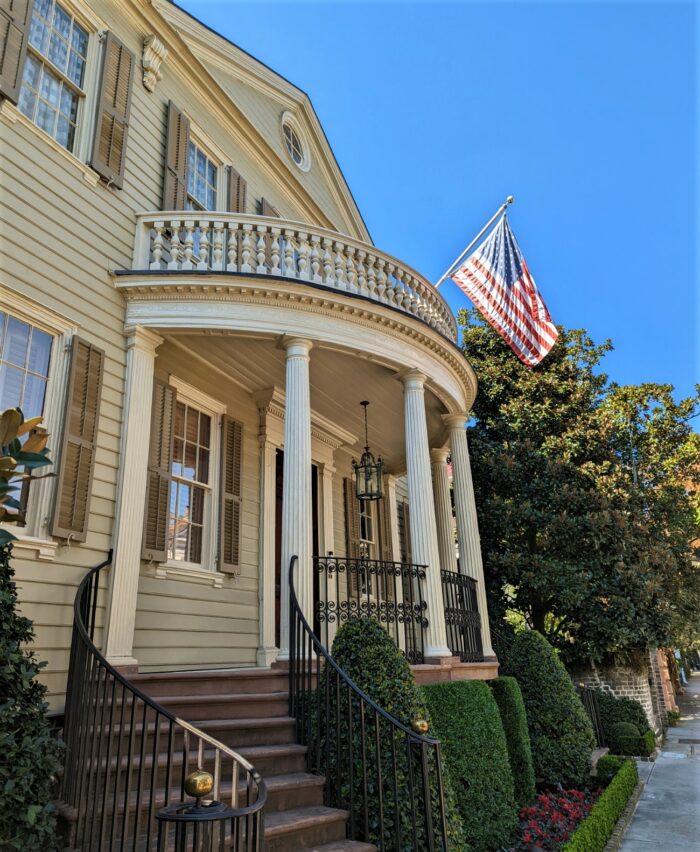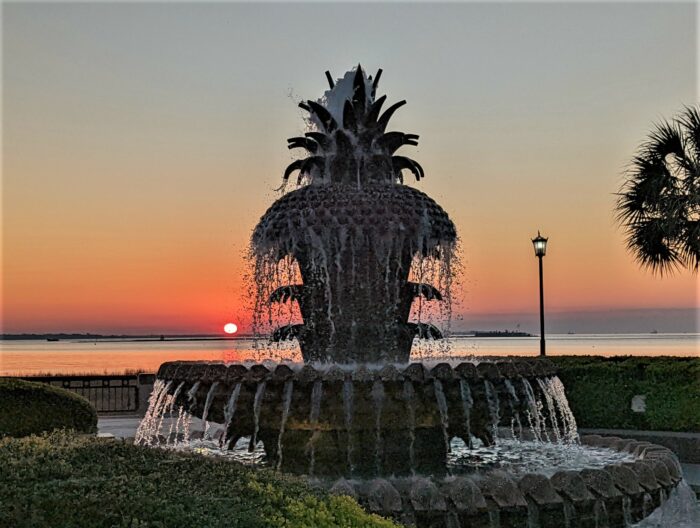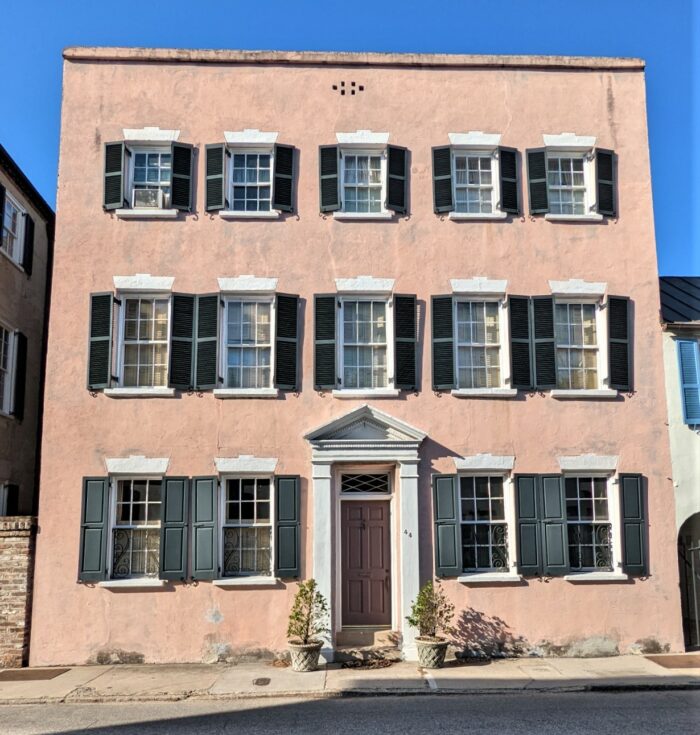This beautiful entrance is to the George Williams Coach House, fronting Church Street. Now a beautiful standalone house, it originally was a dependency building for the Williams Mansion — which is the largest single family house in Charleston (and it appeared in the ABC TV mini-series the North and the South).
Harbor Sunrise
If you look to the right of the rising sun, seen from Waterfront Park, you can spot Shute’s Folly — a small, low lying island in the middle of Charleston Harbor. Originally used to house defensive fortifications for Charleston, the property was bought by Charlestonian Joseph Shute in 1746 — for which he seems to have been ridiculed.
Over time the island passed through a number of ownership hands, but retained the Folly name. It eventually became home to Castle Pinckney, which was originally built in 1797 and then demolished in 1804 by a hurricane. The masonry Castle Pinckney, whose remains can still be seen, was completed in 1808.
Unlike Seward’s Folly, which picked up the snappy new name of Alaska, this folly remains credited to poor Mr. Shute.
Azaleas
Some wonderful azaleas in White Point Garden. Near this spot the pirate Stede Bonnet was hanged in 1718.
Orange
This wonderful Charleston scene can be found on Orange Street… so named as there used to be orange groves in the area.
Dragons
The gates to this flower-covered entry on Tradd Street each have a dragon on it. It is appropriate, as this was the house of the famed science fiction writer Robert Jordan ( his pen name).
St. Michael’s Alley
This beautiful row of buildings on St. Michael’s Alley were all built around 1848. They fell into disrepair and around 1918 were bought and restored by Susan Pringle Frost — the founder of the Preservation Society of Charleston.
Coates Row
This very cool looking post revolutionary building is part of a small complex called Coates Row, which fronts on East Bay Street. Built to house commercial uses, it still does today. This view is from East Elliott Street.
Meeting
The Josiah Smith House on Meeting Street was built c.1783. Meeting Street, while one of the oldest streets in Charleston, was not always called that. It was once referred to as “Old Church Street” (differentiating it from Church Street, which grabbed that name when St. Philip’s relocated there). The street’s name was changed to Meeting Street about when the Circular Congregational Church located there.
Waterfront Sunrise
Joe Riley Waterfront Park is a great place to watch the sunrise. The beautiful park opened in 1989, one week after its scheduled opening — due to recovering from damage caused by the powerful and historic Hurricane Hugo.
Colonial Tradd
This handsome house on Tradd Street was built in 1760. Included in the 1680 “Grand Modell” of Charleston, Tradd Street is said to be named after Robert Tradd, the first child of European descent born in the province.
- « Previous Page
- 1
- 2
- 3
- 4
- 5
- 6
- …
- 188
- Next Page »
